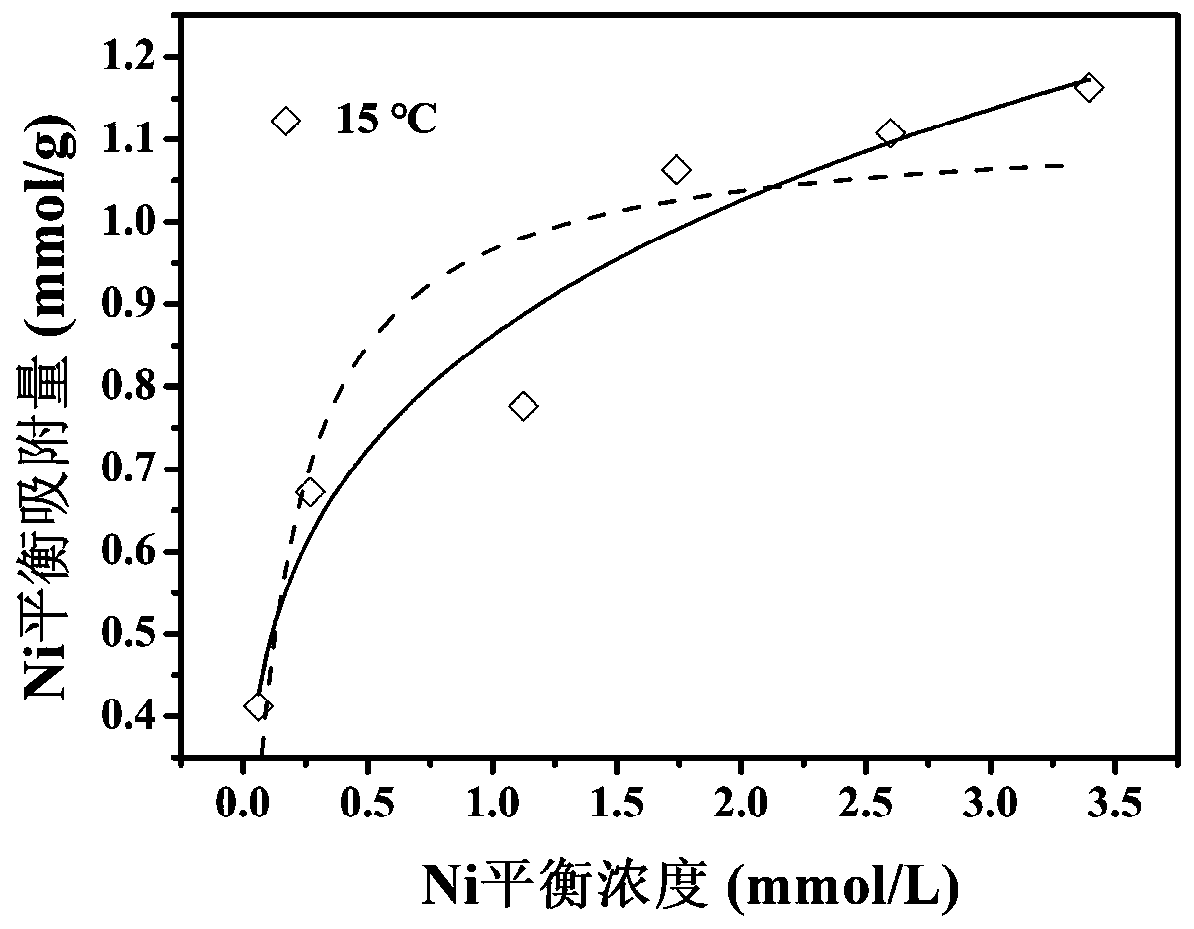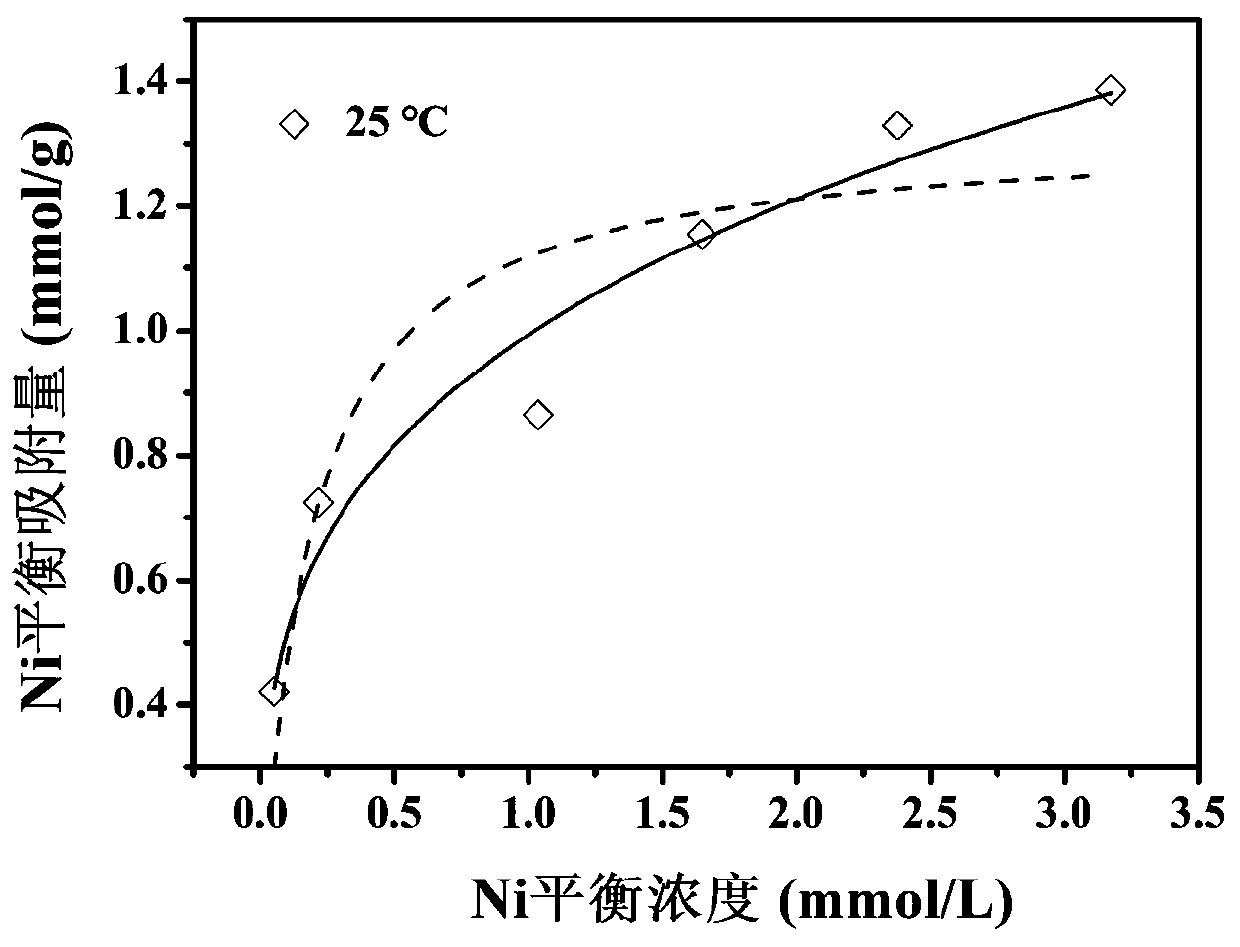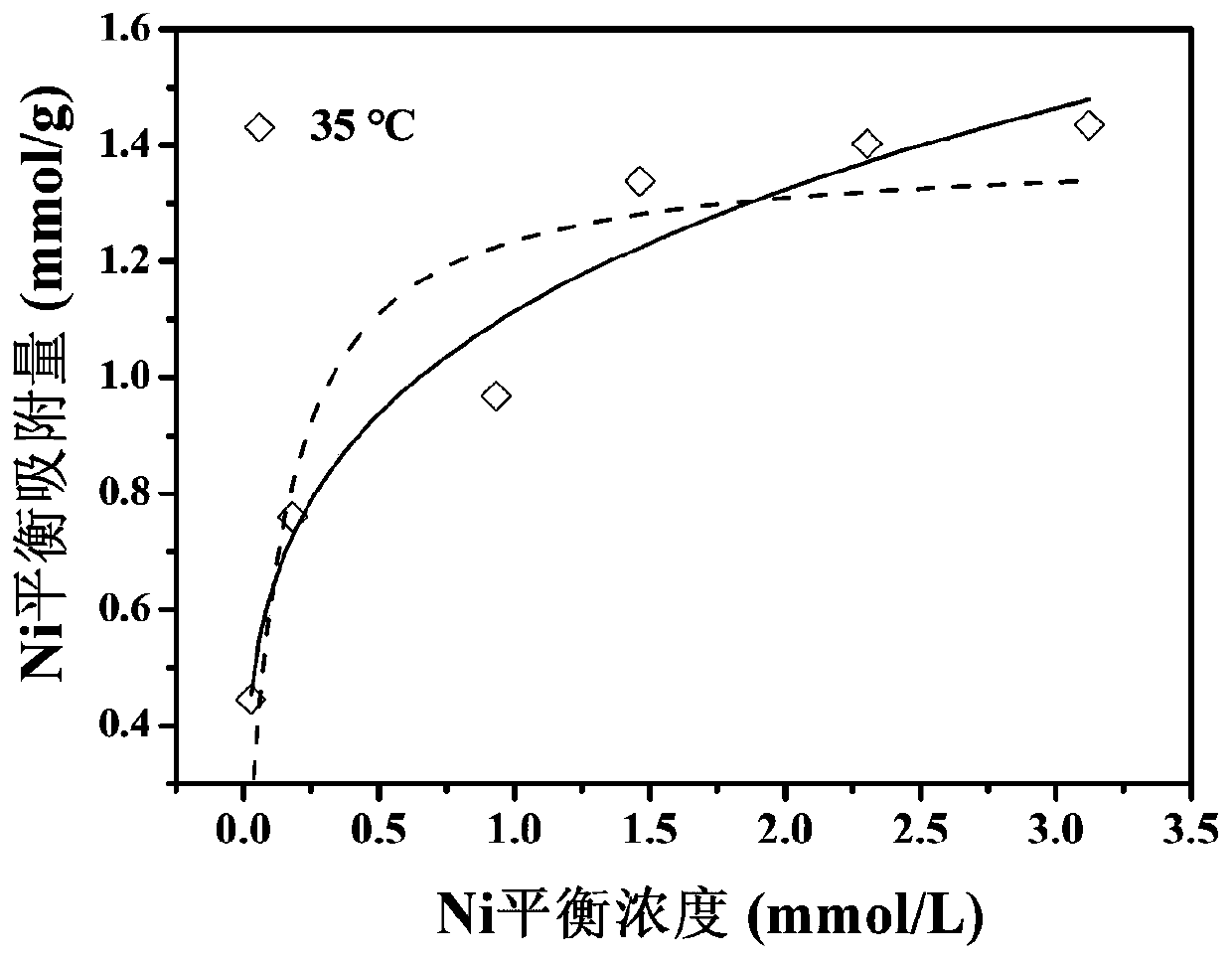Preparation method and application of MCS/SA-PEI composite hydrogel beads
A technology of composite hydrogel and hydrogel beads, which is applied in water/sewage treatment, chemical instruments and methods, adsorbed water/sewage treatment, etc., can solve the problems of heavy secondary pollution, difficult recovery of heavy metals, and high treatment costs , to achieve the effect of improving adsorption performance, strong affinity, and simple preparation method
- Summary
- Abstract
- Description
- Claims
- Application Information
AI Technical Summary
Problems solved by technology
Method used
Image
Examples
Embodiment 1
[0044] (1) MCS / SA@PEI hydrogel beads were prepared by the above method, the adjustment variable was different ammoniated chitosan, and the rest of the synthesis conditions were kept the same, and MCS-1 / SA@PEI (ammoniation reagent was tetraethylenetri amine pentaacetic acid), MCS-2 / SA@PEI (ammonizing reagent is ethylenediamine tetraacetic acid), MCS-3 / SA@PEI (ammonizing reagent is diethylenetriamine), MCS-4 / SA@PEI ( The ammoniating reagent is tetraethylenepentamine) four kinds of hydrogel adsorbents, respectively denoted as adsorbents A, B, C, and D;
[0045] (2) Weigh 0.050 g of the above four hydrogel beads in sequence, place them in 150 mL Erlenmeyer flasks, add 50 mL of Ni-EDTA solution with an initial concentration of 1.0 mmol / L, and shake at a constant temperature of 298 K Oscillate at 160 r / min for 10 h to allow the adsorption to reach equilibrium, measure the concentration of heavy metal ions in the solution at the initial and equilibrium times, and calculate the adsorp...
Embodiment 2
[0048] (1) Tetraethylenetriaminepentaacetic acid was selected as the ammoniating reagent, the adjustment variable was different mass ratios (dry weight) of MCS and SA in the mixed solution, and the rest of the synthesis conditions were kept the same to obtain MCS- / SA-1@PEI (MCS: SA=0.5:1), MCS / SA-2@PEI (MCS:SA=1:1), MCS / SA-3@PEI (MCS:SA=1.5:1), MCS / SA-4@PEI (MCS : SA=2:1) four kinds of hydrogel beads, respectively denoted as adsorbent E, F, G, H;
[0049] (2) Weigh 0.050 g of the above four hydrogel beads in sequence, place them in 150 mL Erlenmeyer flasks, add 50 mL of Ni-EDTA solution with an initial concentration of 1.0 mmol / L, and shake at a constant temperature of 298 K Oscillate at 160 r / min for 10 h to allow the adsorption to reach equilibrium, measure the concentration of heavy metal ions in the solution at the initial and equilibrium times, and calculate the adsorption amount (mmol / g). The experimental results are shown in Table 1.
Embodiment 3
[0051] (1) The ammoniation reagent is tetraethylenetriaminepentaacetic acid, the mass ratio (dry weight) of MCS to SA is controlled at 2:1, the adjustment variable is different concentrations of PEI, and the rest of the synthesis conditions are kept the same to obtain MCS- / SA @PEI-1 (PEI concentration 1wt%), MCS / SA@PEI-2 (PEI concentration 1.5wt%), MCS / SA@PEI-3 (PEI concentration 2wt%), MCS / SA@PEI-4 (PEI concentration 3wt%) four kinds of hydrogel adsorbents, respectively denoted as adsorbent I, J, K, L;
[0052] (2) Weigh 0.050 g of the above four hydrogel adsorbents in turn, place them in 150 mL Erlenmeyer flasks, add 50 mL of Ni-EDTA solution with an initial concentration of 1.0 mmol / L, and shake at a constant temperature of 298 K Oscillate at 160 r / min for 10 hours to make the adsorption reach equilibrium, measure the concentration of heavy metal ions in the solution at the initial stage and at equilibrium, and calculate the adsorption amount (mmol / g). The experimental res...
PUM
 Login to View More
Login to View More Abstract
Description
Claims
Application Information
 Login to View More
Login to View More - R&D
- Intellectual Property
- Life Sciences
- Materials
- Tech Scout
- Unparalleled Data Quality
- Higher Quality Content
- 60% Fewer Hallucinations
Browse by: Latest US Patents, China's latest patents, Technical Efficacy Thesaurus, Application Domain, Technology Topic, Popular Technical Reports.
© 2025 PatSnap. All rights reserved.Legal|Privacy policy|Modern Slavery Act Transparency Statement|Sitemap|About US| Contact US: help@patsnap.com



